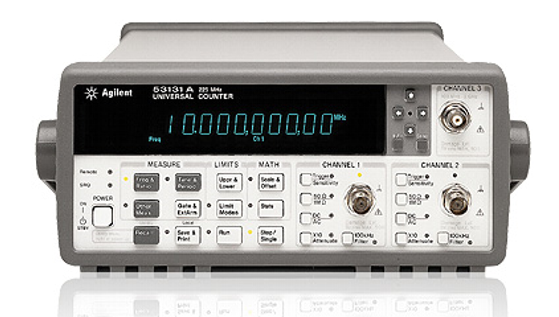universal counter
Universal counters are laboratory measuring instruments for frequency and time measurements. They count the input states of the signal to be measured and relate them to a precise reference clock signal.
In the case of frequency measurement, the input frequency results from the ratio of the number of pulses triggered by the input frequency (N1) to the number of pulses triggered by the reference frequency (N2), related to the period of the reference signal (T): F = N1/N2 x T.
In another counting method, the reciprocal method, two gate circuits are controlled. The time duration of the first gate circuit corresponds to an integer multiple of the input frequency, the time duration of the second gate circuit corresponds to an integer multiple of the period of gate 1. The number of pulses generated by gate 1 is related to the pulse count of gate 2 and its period duration. The higher reference frequencies used in the reciprocal method allow a higher resolution of the measured value display.
The accuracy of universal counters is directly dependent on the accuracy and stability of the time base that generates the reference signal. This is realized with crystal oscillators( XO) and their temperature-compensated variants TCXO and TC-OCXO. Higher accuracies can be achieved with rubidium standards or cesium standards or via high-precision time signals from the Physikalisch-Technische Bundesanstalt(PTB).
Universal counters are a combination of frequency coun ters and timers and can be used for time interval measurements, for counting pulses or events, or for measuring phase differences.

